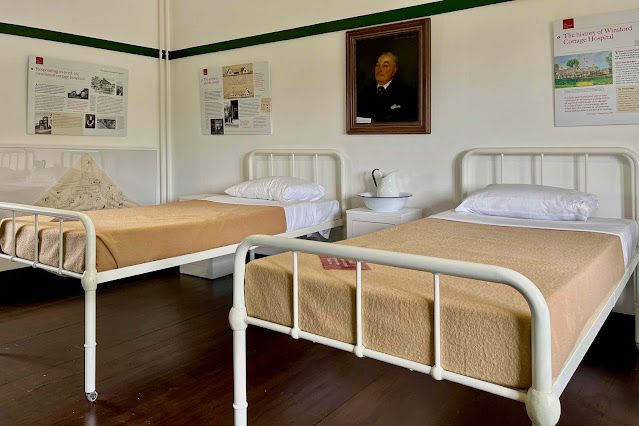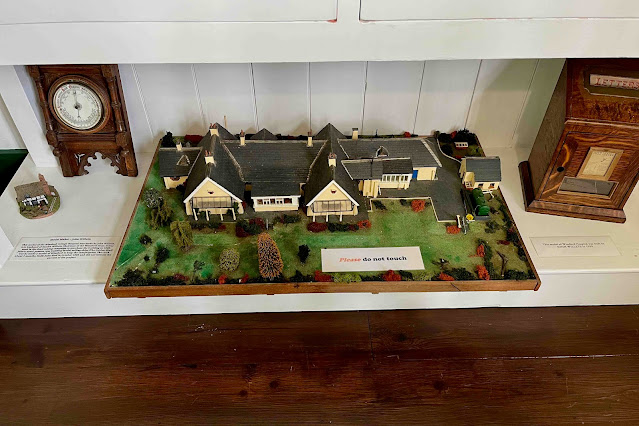Winsford Cottage Hospital
It’s easy to imagine the scene. Outside his church near Piccadilly, the Reverend Charles Voysey listens attentively as a wealthy widow from his congregation describes her plan to honour her late husband’s memory by funding the construction of a Cottage Hospital to serve the rural communities close to her country house in North Devon. “My eldest son is a successful practising architect, a man of sober habits and an industrious disposition and I’m sure your altruistic proposal would appeal to him. If you will permit me, I shall effect an introduction.” Due to his theistic views, Rev. Voysey had antagonised the Anglican hierarchy and like all good dissidents he launched his own church, attracting some wealthy and influential followers. One of whom was the recently widowed benefactor, Mrs Maria Louise Medley of Winsford Towers. Designs for Winsford Cottage Hospital were drawn up in 1899 by C F A Voysey who over the previous decade had refined his own very individual Arts & Crafts influenced style designing substantial homes for affluent clients, including H G Wells.
Voysey’s design was modest in scale - a long single storey building with gabled projecting wings at each end. There was a generous entrance hall and a linear layout with rooms accessed from a corridor with a mosaic floor of glazed sandstone tiles that ran the length of the building. Furnishings and fittings drew heavily on Voysey’s favoured decorative devices (hearts, spades, etc) to enhance the homely and welcoming feel that he strove for, all the while scrupulously avoiding anything excessive. Agricultural labour was the main source of employment in the area, wages were low and housing conditions often primitive. The subsidised care and treatment offered by the new facility was much needed. When it opened in 1900 there were only seven beds which in stages rose to fifteen by 1998 when it closed. It had been absorbed into the NHS since 1948 but many of its original features were still intact although some, like the mosaic floor, had been covered up for many years.
There was a train station (Halwill Junction) only two minutes walk away that connected this remote rural village with Okehampton and Exeter to the south and east. Just to the north of the station three separate lines radiated - one to Bude, one to Launceston and Padstow, and a third to Torrington and Barnstaple. An abattoir stood alongside the station and trainloads of carcases were dispatched and daily trains of produce passed through enroute for London markets. In summer, frequent holiday trains bound for North Devon and North Cornwall resorts, including the famous Atlantic Coast Express ran to and fro. Voysey thoughtfully designed the children’s ward at the hospital to give the young patients a panoramic view of activity at the station.
In 2019 the Landmark Trust completed a long programme of work to restore original features and convert the west wing to holiday accommodation - a suite of repurposed rooms sensitively accessorised in period furnishings and decor. Most of the walls were re-plastered and the roof of Delabole slate was completely replaced. In the corridor, teams of volunteers laboriously scraped away the screed that concealed the golden mosaic floor to reveal it in all its glory.















No comments:
Post a Comment